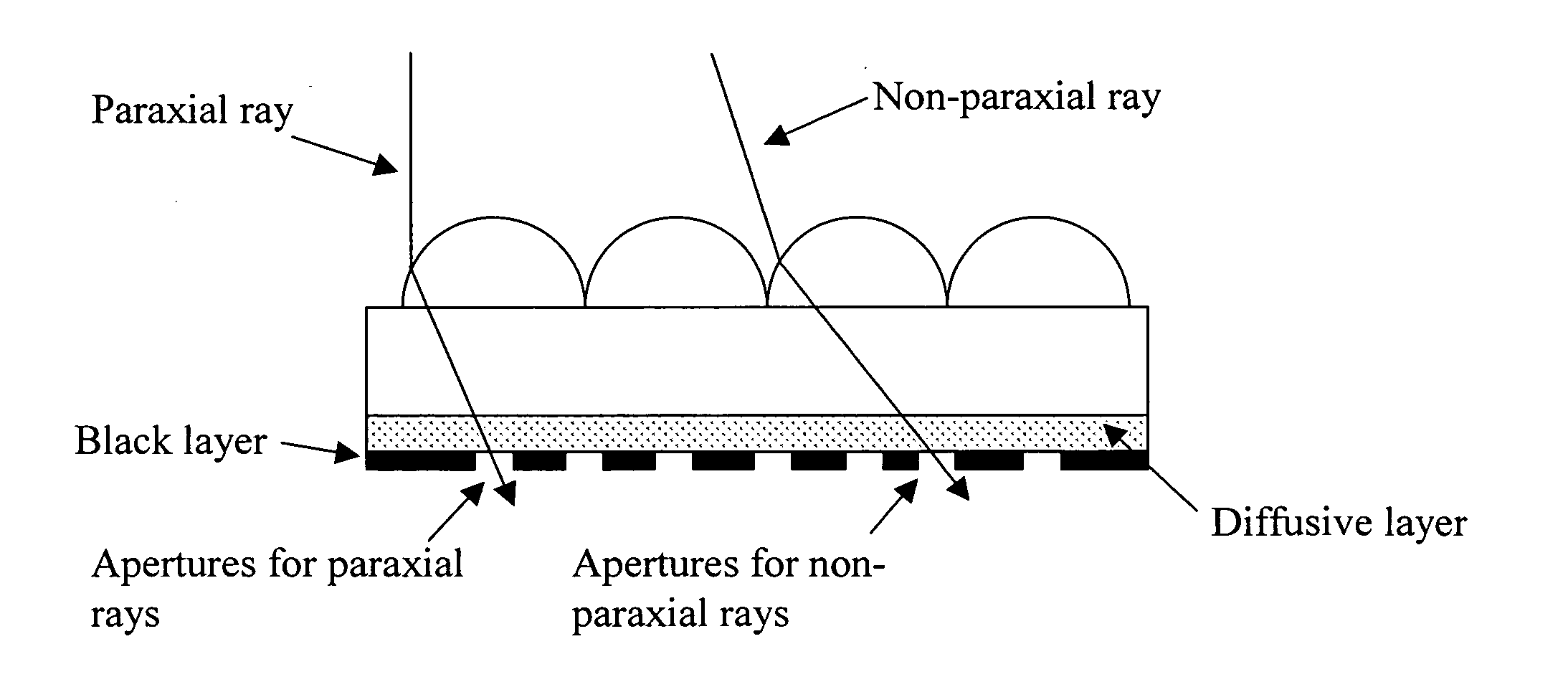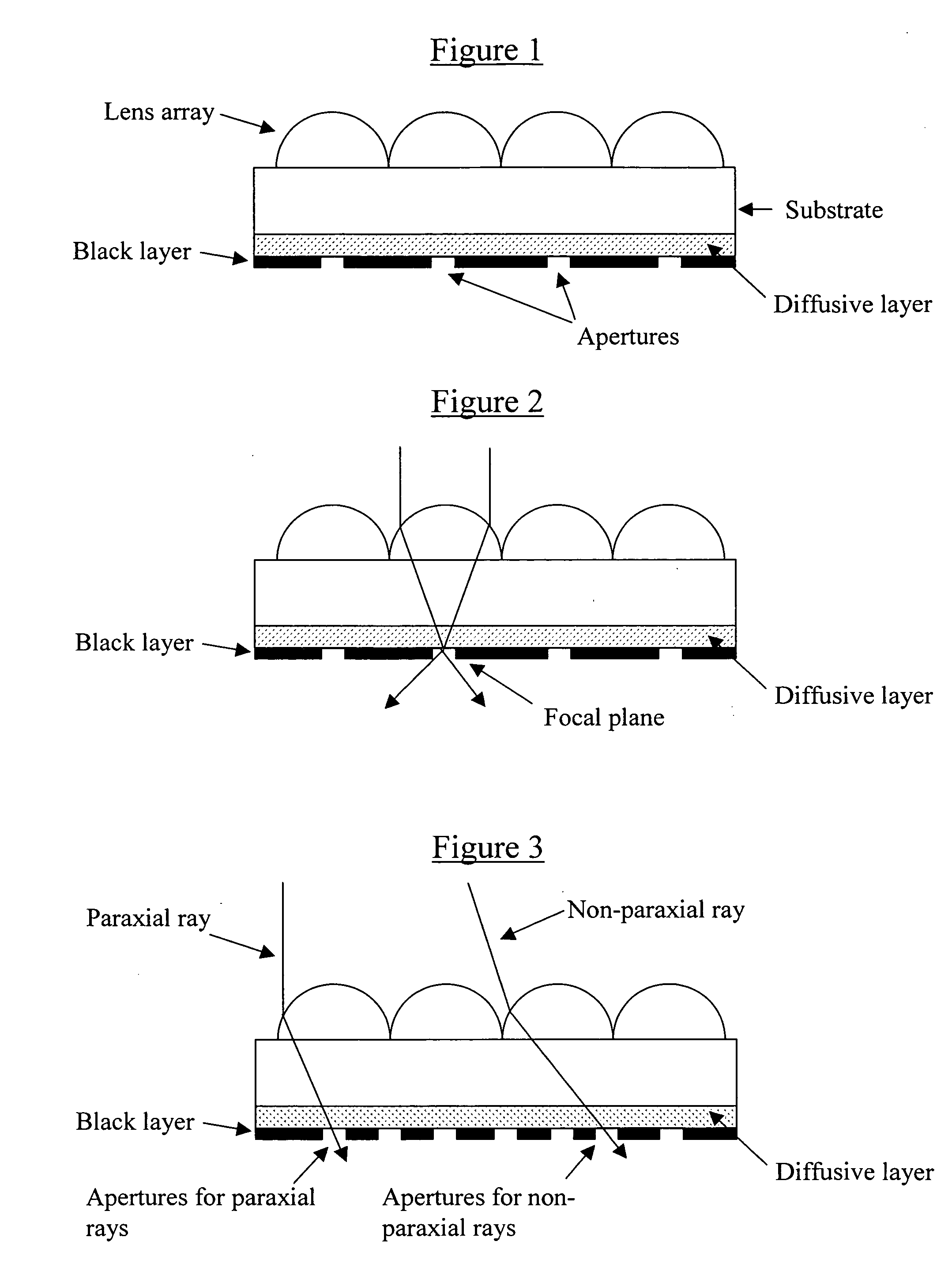Microstructures for producing optical devices, sieves, molds and/or sensors, and methods for replicating and using same
a technology of microstructures and optical devices, applied in the field of microstructures for producing optical devices, sieves, molds and/or sensors, and methods for replicating and using same, can solve the problems of reducing overall production yield, time-consuming and/or expensive sieving methods, and affecting the quality of optical devices
- Summary
- Abstract
- Description
- Claims
- Application Information
AI Technical Summary
Benefits of technology
Problems solved by technology
Method used
Image
Examples
example 1
[0102] A plastic web stock was coated with both the diffusive layer and black layer. A lens array was formed on the web stock using a stamper. The lens arrays were then irradiated with coherent radiation to create self-aligned apertures. This exposure additionally created other apertures related to the thickness of the dispersion layer and the size and character of the apertures were directly related to this film thickness and power incident on the surface. Incident power ranged from 250 to 450 mJ. This example is illustrated in FIGS. 1-3.
example 2
[0103] Plastic web stock was coated with a black layer. A lens array was formed on this web stock from a stamper. The lens arrays were the irradiated with coherent radiation at angles both of normal incidence and at 15 and 30 degrees off of normal in both directions (FIG. 6). The result was the creation of 5 distinct apertures per lens with the only visible light observed in a microscope objective being that light incident and directed in the same direction as the exposed light ray example.
[0104] The above example was further repeated with 3 incident laser light beams, one normal and two at + / −30 degrees incident angles. Again the result was the formation of distinct apertures which accumulated light in the direction of aperture creation. This example is illustrated in FIGS. 4-6.
example 3
[0105] Samples were created to display elongated apertures in front of elongated lens shapes. These elongated apertures exhibited both an increased transmissivity and an increase in viewing angle, up to 20 degrees in the test samples. The above light control examples were created in a plastic web stock coated with a black layer on one side and on the other side of which a lens array was replicated off of a stamper. The exposure with a laser created self-aligned apertures and the shape of the aperture was further elongated by increase intensity of the exposure to the laser beam and at exposure intensities of 350 to 400 mJ. This example is illustrated in FIGS. 7-9.
PUM
 Login to View More
Login to View More Abstract
Description
Claims
Application Information
 Login to View More
Login to View More - R&D
- Intellectual Property
- Life Sciences
- Materials
- Tech Scout
- Unparalleled Data Quality
- Higher Quality Content
- 60% Fewer Hallucinations
Browse by: Latest US Patents, China's latest patents, Technical Efficacy Thesaurus, Application Domain, Technology Topic, Popular Technical Reports.
© 2025 PatSnap. All rights reserved.Legal|Privacy policy|Modern Slavery Act Transparency Statement|Sitemap|About US| Contact US: help@patsnap.com



